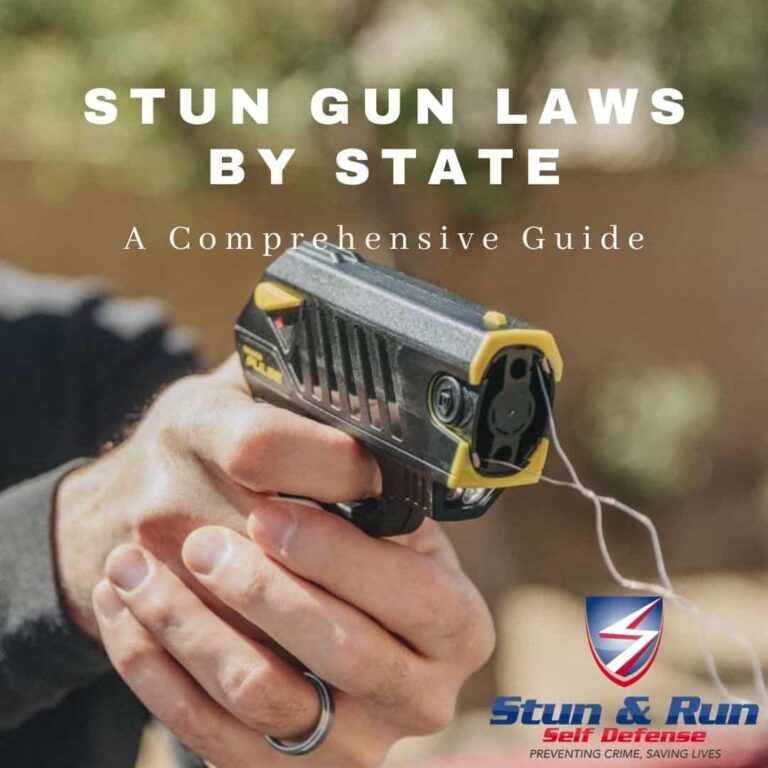Table of Contents
- Understanding Local and State Regulations for Stun Gun Ownership
- Choosing the Right Stun Gun Model for Legal Compliance
- Proper Storage and Transportation Methods to Avoid Legal Complications
- Best Practices for Responsible Use and Carrying in Public Spaces
- Concluding Remarks
Understanding Local and State Regulations for Stun Gun Ownership
When considering carrying a stun gun, it’s essential to recognize that regulations vary significantly between localities and states. What’s legal in one city may be prohibited just a few miles away. Some states require permits or have specific age restrictions, while others might ban stun guns entirely or limit their use to particular situations such as self-defense. Understanding these nuances means you need to research your local laws thoroughly before purchasing or carrying a stun gun to avoid unexpected legal consequences.
Here are key points to keep in mind:
- Permit requirements: Certain states require you to obtain a license or permit before you can legally carry a stun gun.
- Restricted zones: Many jurisdictions prohibit stun guns in sensitive areas like schools, government buildings, or airports.
- Age limits: You may need to be 18 or older to legally possess a stun gun in your area.
- Usage laws: Know when and how you are legally allowed to deploy a stun gun for self-defense.
By staying well-informed and compliant with these regulations, you can confidently carry your stun gun without risking penalties or confiscation. Always consult updated local statute databases or legal professionals to ensure you meet current requirements.
Choosing the Right Stun Gun Model for Legal Compliance
When selecting a stun gun, it’s crucial to ensure the model complies with your local regulations. Laws vary significantly by state and country, often dictating restrictions on voltage output, size, and design features. Opt for models that clearly list compliance certifications and have voltage ratings within legal limits for your area. Some jurisdictions prohibit stun guns that resemble firearms or have concealed clip attachments, so careful attention to these details can save you from potential legal complications.
Choosing the right stun gun also means balancing effectiveness with legality. Look for features such as:
- Clear voltage specifications: Ensure the output aligns with legal thresholds.
- Visible safety switches: These prevent accidental discharge and are often required by law.
- Design simplicity: Avoid novelty or disguised stun guns that may be banned.
- Trusted brands: Reputable manufacturers tend to adhere to legal standards.
By prioritizing legally compliant models, you enhance your personal safety without risking unintended legal troubles.
Proper Storage and Transportation Methods to Avoid Legal Complications
When it comes to carrying a stun gun, ensuring proper storage and transportation is crucial for staying compliant with local laws. Always keep your device in a secure, hard-sided container when not in immediate use. This not only prevents accidental discharges but also demonstrates a responsible approach that authorities respect. Ideally, store it in a separate compartment away from your regular carry items such as keys, wallets, or phones. This separation minimizes the risk of unintentional activation and helps you quickly access the stun gun only when absolutely necessary.
During transportation, consider the following guidelines to avoid legal pitfalls:
- Keep the stun gun unloaded and switched off: Always ensure it is powered down to reduce risks.
- Use a locked, tamper-proof container: This is especially important when traveling through areas with stricter regulations.
- Store it out of reach during vehicle transport: The glove compartment or a locked console works best to comply with many state laws.
- Verify local and state laws before travel: Regulations vary widely; some jurisdictions prohibit stun guns altogether.
Best Practices for Responsible Use and Carrying in Public Spaces
When carrying a stun gun in public, it’s crucial to prioritize safety for both yourself and others. Always keep your device securely holstered in a way that prevents accidental activation. Avoid displaying or flaunting your stun gun, as this can cause unnecessary alarm or suspicion. Additionally, stay informed about the specific laws and regulations in your area-many jurisdictions have restrictions on the types or voltage levels allowed, as well as designated places where carrying is prohibited. Being mindful and respectful of these rules deters legal complications and promotes responsible ownership.
Consider adopting these practical habits to ensure responsible use:
- Regularly inspect and maintain your stun gun to ensure it functions properly without malfunction.
- Practice discreet carrying by using suitable holsters or concealment options designed for non-intrusive access.
- Keep situational awareness to avoid escalating conflicts where stun gun use is unnecessary or unlawful.
- Educate yourself on self-defense techniques to complement your stun gun as a safety tool.
By integrating these practices into your routine, you reduce the risk of legal trouble and contribute to safer public environments for everyone.
Concluding Remarks
In conclusion, carrying a stun gun responsibly and legally requires a clear understanding of your local laws and regulations, as well as a commitment to using the device safely and ethically. By staying informed, registering your stun gun where necessary, and adhering to proper storage and transportation guidelines, you can protect yourself without risking legal trouble. Remember, responsible ownership not only enhances your personal safety but also ensures peace of mind. Stay safe, stay informed, and carry with confidence.Check Our Other Blogs
- StunGun – Your Trusted Source for Stun Guns, Laws, and Self-Defense Tips
- PepperSprayLaws – Your Trusted Resource for Pepper Spray Information
- StunGunLaws – Your Trusted Guide to Stun Gun Legality and Safety





